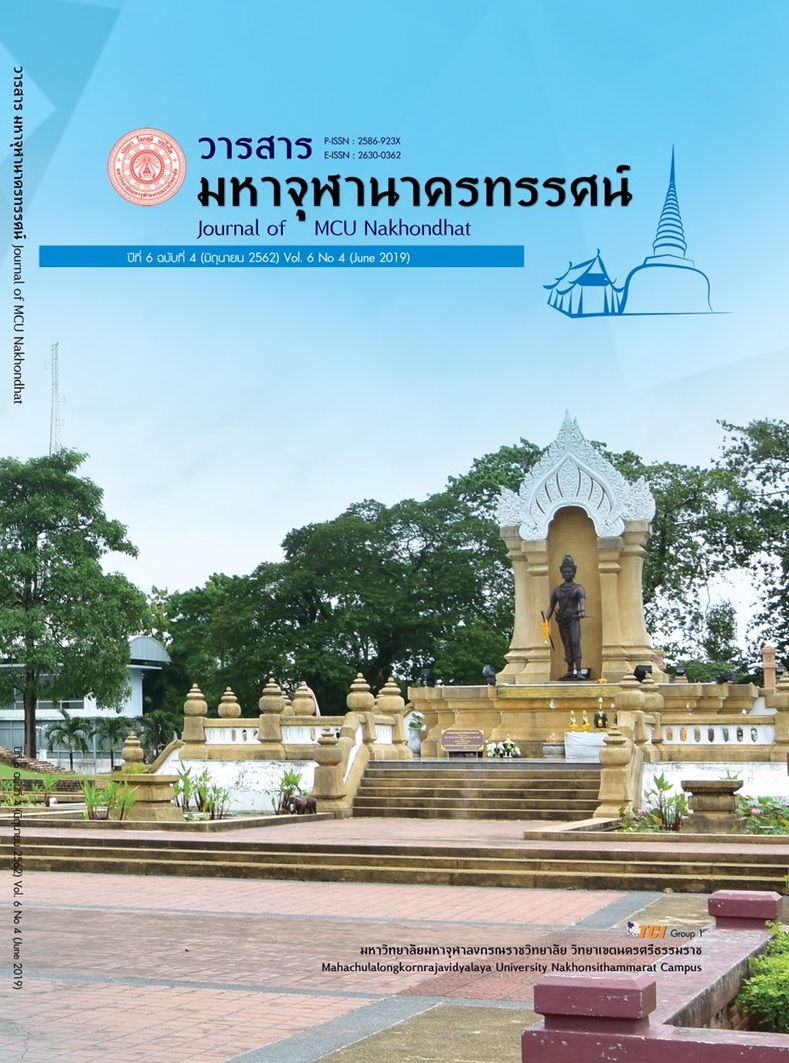SUSTAINABLE MANAGEMENT MODEL TO ENHANCE BOTH THE QUALITY AND VALUE OF NIPA PALM PRODUCTS BASED ON SUFFICIENCY ECONOMY PHILOSOPHY
Main Article Content
Abstract
The objective of this research was to create the sustainable management model to enhance both quality and value of nipa palm products based on sufficiency economy philosophy. The nipa palm stands at Khanab Nak sub-district, Pak Phanang district of Nakhon Si Thammarat province was chosen to be the study area. The 35 key informants were purposively selected from agriculturists who planting nipa palm, committees and members of nipa palm occupational group, community leader, government and private sectors involved with nipa palm. The qualitative research method was used by emphasizing documentary study, an in-depth interview, non-participant observation, focus group techniques, and best practices were employed for gathering data. The qualitative data taken from the interview results and recommendations, the synthesis of content classification and grading.
The new model from this research was an sustainable management model to enhance both quality and value of nipa palm products based on sufficiency economy philosophy called ‘NIPA PALM MODEL’ were conducted from the concept of SEP + 7M + WISE 2 by using the principle of building internal strength to external to nipa palm products under three different aspects as follows; 1) application of the philosophy of sufficiency economy (SE) which has 3 components of moderation, reasonableness, and self-immunity along with 2 conditions of morality and knowledge; 2) 7M’s to Management including group management, human resource management, knowledge management, production management, value-added management, financial management, and market management; 3) the five core principles of sustainability including wisdom inheritance, social, economy, environment, and self-reliance.
Article Details
References
เพ็ญจันทร์ สังข์แก้ว. (2551). การสร้างรูปแบบการจัดการองค์กรธุรกิจชุมชนเพื่อการพึ่งตนเองตามแนวเศรษฐกิจพอเพียงประเภทธุรกิจเกษตรของเกษตรกรปลูกมะขามหวานเพื่อการค้า จังหวัดเพชรบูรณ์. ใน รายงานการวิจัย. มหาวิทยาลัยราชภัฏเพชรบูรณ์.
มูลนิธิชัยพัฒนา. (2562). เศรษฐกิจพอเพียง. เรียกใช้เมื่อ 24 มกราคม 2562 จาก https://www.chaipat.or.th/site_content/item/1309-2010-06-03-09-50-07.html
สำนักงานคณะกรรมการเศรษฐกิจและสังคมแห่งชาติ. (2550). การประยุกต์ใช้ปรัชญาของเศรษฐกิจพอเพียง . (พิมพ์ครั้งที่ 1). กรุงเทพมหานคร: กลุ่มงานเศรษฐกิจพอเพียง สำนักงานคณะกรรมการพัฒนาการเศรษฐกิจพอเพียง.
สำนักอนุรักษ์ทรัพยากรป่าชายเลน กรมทรัพยากรทางทะเลและชายฝั่ง. (2557). การจัดการป่าจากในลุ่มน้ำปากพนัง . (พิมพ์ครั้งที่ 2). กรุงเทพมหานคร: สำนักอนุรักษ์ทรัพยากรป่าชายเลน.
Markusen A. (2004). Targeting Occupations in Regional and Community Economic Development. Journal of the American Planning Association, 70(3), 253-268.
Miller N. J. and Besser T. L. (2000). The importance of community values in small business strategy formation: Evidence from rural Iowa. Journal of Small Business Management, 38(1), 68-85.


